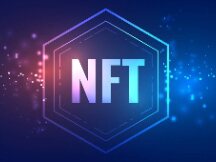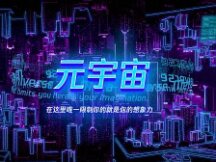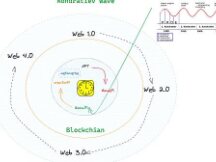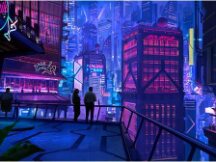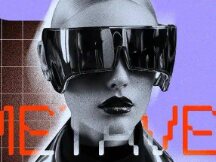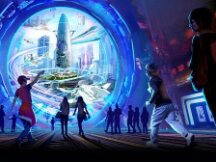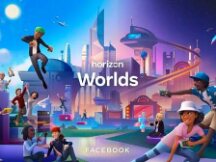Kevin Kelly: in 20 years, people will be able to open the "world of mirrors"
On December 27, 2021 Baidu Create Conference (AI Developer Conference), the main conference was held at Baidu Metaverse APP Xiyang. He and Kevin Kelly, co-editor of Wired magazine, an Internet thinker and author of "Advertising", are also special guests of the "Inevitably" Design Forum, sharing their thoughts on the next generation of Metaverse Internet platforms.
According to Kevin Kelly's theory, mixed reality (MR), which provides real and virtual reality, will be the next platform, called the world of glass. Using the mirror world is more difficult than virtual reality and meta-universes. Each user becomes a creator who creates the real world using the virtual world to draw a map of the world.
At the same time, Kevin Kelly said that this process will take at least 20 years, and even after 20 years people will not be able to complete his description of the Earth Mirror. However, its implementation has placed new demands on algorithms, chips, bandwidth, and industry standards, which also means that there are plenty of opportunities in front of people and now is the time to get involved in sport.

Here is the full text of Kevin Kelly's quote.
Hello, this is Baidu Center! I'm Kevin Kelly, author of "Advertising" and Senior Advisor for "Wired" magazine. It's a pleasure to come to Creator City to share my thoughts on the next-gen platform with you.
I think integration will be the next platform. Everyone knows VR is a man-made place, but the next-gen platform is a mixed place. A mixture of real world and artifacts is sometimes referred to as MR. Access the moments when you walk in virtual reality. We call it immersion, and we think we are there.
And in the mix, you see the real world through your smart glasses and you understand what exists, which is the possessions of the world. This is the main feature of this new available platform. I call the world the mirror of the world.
It is more difficult to create a mirror world and gain a presence compared to other VR worlds or metavers. But if you can create a mirrored world, you can create VR and a metaverse, but not others. The mirror world is therefore a bigger platform. The concept is similar to the use of glasses to see the real world by superimposing a virtual world made up of digital data.
You can do a lot of things with it. We can create products by walking, we can create buildings that the human body can access, but we can see and feel the presence of a virtual house in our space. Can be used as a study guide. The idea is that the real and virtual worlds come together to create a new platform. Not only virtual, but also realistic, with a mixture of the real and the virtual.
It provides tips, alerts, entertainment, and multiple layers of information that can be used in a variety of ways to enhance your real-world experience. The main role of technology is to complete the map of the world, creating a mirror of the world equal to the real world.
Who will sign this report? The answer is us, and we are attracting users as well. The real world needs to experience virtual reality while wearing glasses. And when you look back, the screen is remapped and updated. Thus, each user becomes the creator of the world, creating a user-created map. All objects, large and small, in architectures have virtual versions, digital twins, and mirror images. And these mirrors will be fantastic.
It is also a shared world. That is, if I see or do something here, others can also see. It can be connected to any device, as seen through smart glasses, but can be viewed on any device with a screen, including cell phones. It is visible, can adjust and move in real time, and can interact with time. In a way, it's dynamic.
Just like the simulations you do now when you create special effects in movies that simulate real physics, when things fall, bounce, or objects actually bend, the world will have the same physics and mechanics. This means that he looks, behaves and walks towards reality.
Every part of the world will be a part of it, and most importantly, real people as well. So we will have an avatar. We will be able to track gestures, movements, eyes and thoughts in one way or another, and the glasses will be equipped with a face-to-face camera that recognizes the person telling and communicating for the avatar. Avatar can be an important post on WeChat because it will be a platform where we can interact with others. Avatar will also be the most interactive tool in any virtual environment.
Of course, for the avatar to work, the avatar has to be cloud-based, which means not only 5G, but 6G and even 10G. In order to have real-time communication to capture, manage and transmit a wide range of visual data, a lot of bandwidth is required.
Therefore, the first generation network has completed the digitization of all data. This means that all books, documents and documents are digitized so that they can be seen, searched, browsed and intermediated created by algorithms. The second network recognizes the digitization of interpersonal relationships and human behavior in relationships. We are now in the third generation of the Internet. Finally, we will experience the digitization of everything including all places, houses, objects and the world.
It would be a huge change, meaning the world itself would be affected by algorithmic research. When we do data, we find, manage, and process sites and products. Therefore, one of the most important components of the mirror world is the machine reader, which lays the foundation for the machine reader experience for any future application, which is the world.
At the same time, since the world has become a world seen by robots and AI, cars traveling on the road will always see this globe, which is the globe, the mirror of the real world is superimposed on the virtual world. We can see the real world and we can see the virtual world. Some people therefore call this new platform the space internet. (Note: the original English text was the space internet)
The spatial 3D Internet is the real world with spatial overlays because it is characterized by three dimensions of packed, available and placed space. That power is our ability to present everything in the new world through algorithms and digitization.
The world needs ubiquitous low-cost AI so badly to make this work. Analyzing, scanning, drawing, analyzing and publishing also requires a wide range of skills. Without intelligence, there would be neither an earthly mirror nor a metaverse. Therefore, smart technology is the key to ensuring low cost, high efficiency, rugged performance and the engine that makes the world move.
Additionally, some AI is running on devices like smartphones and smart glasses, while more AI is running in the cloud. So while gestures and gestures that require quick capture are tools, we believe the effects, globalization, and architecture can be controlled by AI in the clouds.
Think of it as a 20 year career, and those 20 years are just beginning. These things that I say will not happen in the next 20 years. But if that happens, I think it'll be the first thing that happens to employees and businesses, and that's what we'll see for the first time. We will use it to train people and teach, correct and help people understand. This device performs a simulated operation to help control it.
We will need a whole new algorithm to handle these large numbers, and the compression skills of computing will need to be developed above. We need new chips, we need new bandwidth not available with existing technology, we need new business models.

Scan QR code with WeChat
